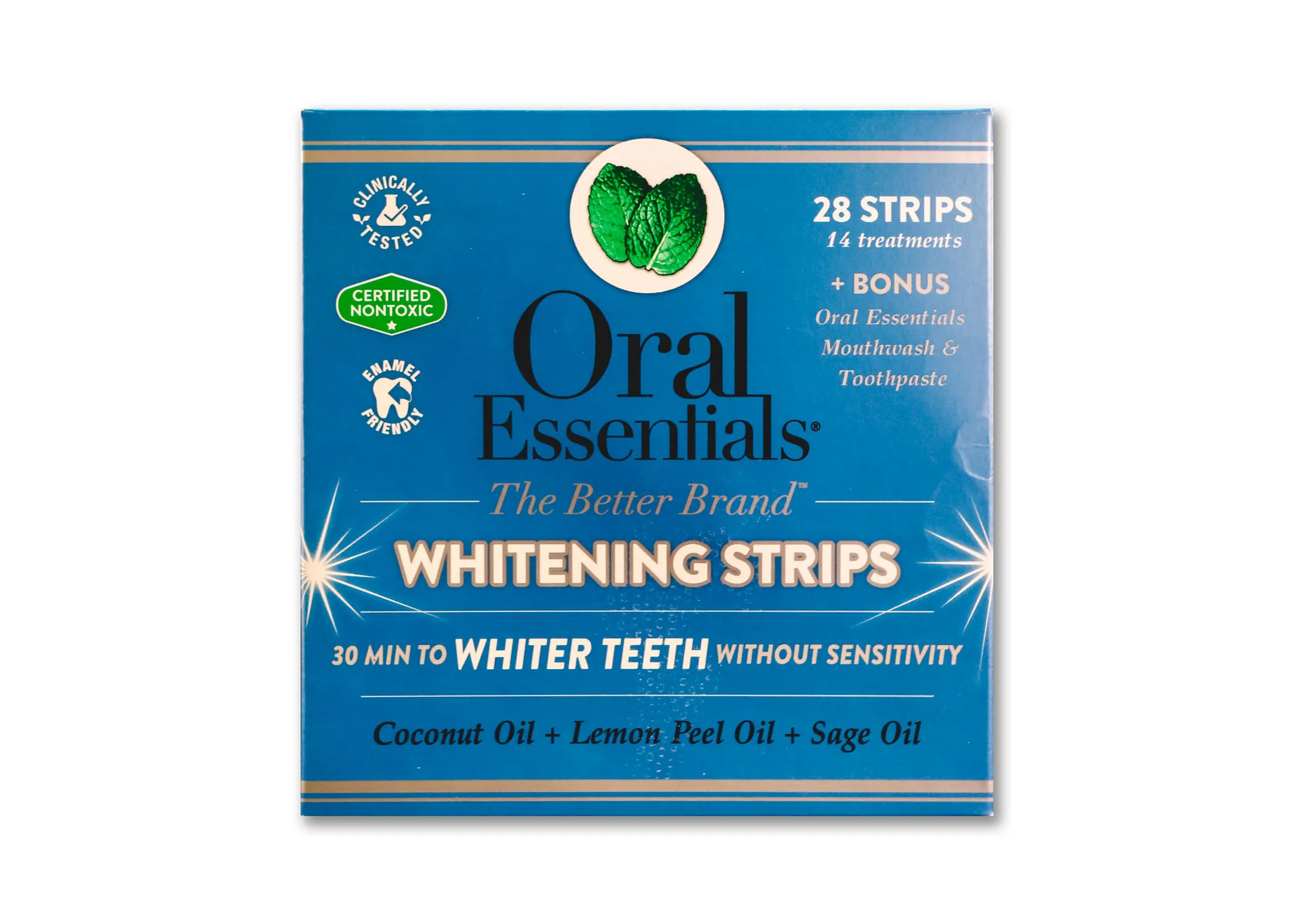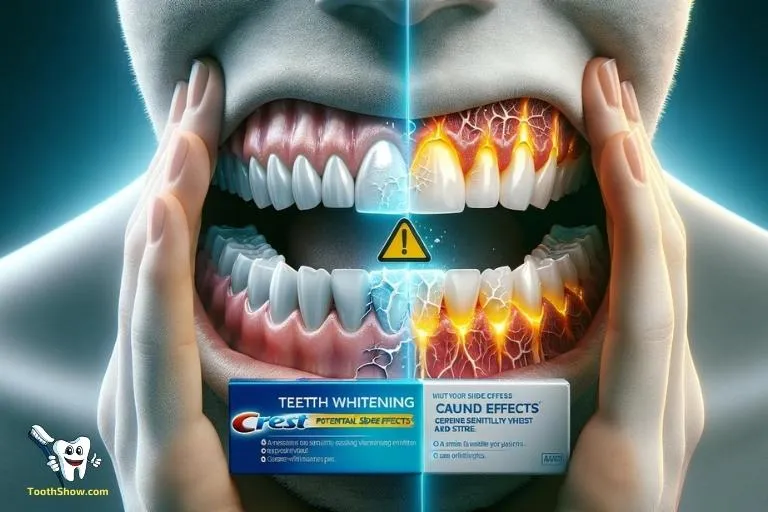Understanding Whitening Strips Side Effects
Whitening strips are a popular method for achieving a brighter smile, but it’s crucial to be aware of the potential side effects. These strips contain bleaching agents, typically hydrogen peroxide or carbamide peroxide, which can lead to various oral health issues. While many people experience no significant problems, understanding the risks associated with these products is essential for making informed decisions about your dental care. This article delves into the top five risks associated with using whitening strips, helping you to use them safely and effectively while minimizing any negative consequences. It’s important to consult with your dentist before starting any teeth-whitening treatment, especially if you have pre-existing dental conditions.
Tooth Sensitivity
Tooth sensitivity is perhaps the most common side effect of using whitening strips. Many users report a temporary increase in sensitivity to hot, cold, sweet, or acidic foods and drinks. This sensitivity occurs because the bleaching agents in the strips can penetrate the enamel and reach the dentin, which contains tiny tubules connected to the nerves of your teeth. This irritation can cause a sharp, uncomfortable sensation, especially when consuming temperature-sensitive items. Fortunately, this sensitivity is usually temporary and subsides once you stop using the strips or reduce the frequency of use.
Causes of Tooth Sensitivity

The primary cause of tooth sensitivity from whitening strips is the penetration of the bleaching agents into the tooth’s structure. Hydrogen peroxide and carbamide peroxide break down into oxygen molecules, which oxidize the stains on your teeth. During this process, these chemicals can also irritate the nerve endings within the teeth, causing sensitivity. The concentration of the bleaching agent, the duration of application, and the frequency of use all play a role in the severity of sensitivity experienced. Individuals with pre-existing dental issues such as microcracks or thin enamel may be more prone to experiencing sensitivity.
Managing Tooth Sensitivity
Several strategies can help manage tooth sensitivity. Using toothpaste designed for sensitive teeth, which contains ingredients like potassium nitrate, can help block the nerve signals and reduce discomfort. Avoid consuming extremely hot or cold foods and drinks while undergoing whitening treatments. If sensitivity is severe, consider shortening the application time of the whitening strips or reducing the frequency of use. In severe cases, consult your dentist, who may recommend fluoride treatments to strengthen your enamel or other professional interventions. Consistency in proper oral hygiene is also very important.
Gum Irritation
Gum irritation is another common side effect of using whitening strips. The bleaching agents can come into contact with the soft tissues of your gums, leading to inflammation, redness, and soreness. This irritation can range from mild discomfort to significant pain, making it difficult to eat or brush your teeth. Gum irritation typically occurs when the strips are not properly applied and come into contact with the gums, or when the concentration of the bleaching agent is too high for your gums to tolerate.
Symptoms of Gum Irritation

Symptoms of gum irritation include redness, swelling, and tenderness of the gums. You may notice white patches or blisters along the gumline, indicating chemical burns from the bleaching agents. In some cases, the gums may bleed easily when brushing or flossing. The severity of these symptoms depends on the concentration of the bleaching agent, the duration of contact, and the individual’s sensitivity. Proper application of the strips can minimize the contact between the bleaching agent and the gums, reducing the risk of irritation.
Preventing Gum Irritation
To prevent gum irritation, ensure the whitening strips are applied correctly. Avoid overlapping the strips onto your gums; position them carefully on your teeth, away from the gumline. You can use a cotton swab to remove any excess bleaching agent that comes into contact with your gums. If you have sensitive gums, consider using strips with a lower concentration of the bleaching agent. If irritation occurs, stop using the strips immediately, and rinse your mouth with water. You can also consult with your dentist, who may recommend an anti-inflammatory mouthwash or other treatments.
Enamel Erosion
Enamel erosion is a more serious risk associated with the overuse of whitening strips. Although enamel is the hardest substance in the human body, it can be weakened over time by the bleaching agents. Repeated exposure to these chemicals can lead to the breakdown of the enamel structure, making teeth more susceptible to decay, sensitivity, and staining. This risk is particularly high if you use whitening strips frequently or for extended periods. The extent of enamel erosion depends on the concentration of the bleaching agent, the application frequency, and your overall oral hygiene practices.
How Whitening Strips Affect Enamel

The bleaching agents in whitening strips, such as hydrogen peroxide, can break down the protein matrix of the enamel, causing it to become porous and less resistant to acid attacks from food and bacteria. This erosion process can result in the thinning of the enamel layer, exposing the underlying dentin, which is softer and more vulnerable. As enamel erodes, the teeth become more sensitive to temperature changes and more prone to staining. Regular use of whitening strips without proper precautions can accelerate this erosion process, leading to long-term dental problems.
Protecting Your Enamel
To protect your enamel, follow the manufacturer’s instructions carefully and avoid excessive use of whitening strips. Use products with lower concentrations of the bleaching agent, and limit the frequency of use to the recommended schedule. Use a fluoride toothpaste and consider using a fluoride rinse to strengthen your enamel. Consult your dentist about the best practices for maintaining your oral health while using whitening strips. Regular dental check-ups can help monitor the condition of your enamel and identify any signs of erosion early on. Brushing properly with a soft toothbrush is also very important.
Soft Tissue Damage
Soft tissue damage refers to the potential harm caused to the gums, lips, and other soft tissues in the mouth by the bleaching agents in whitening strips. This damage can manifest in several forms, from mild irritation to chemical burns. The severity of the damage depends on the concentration of the bleaching agent, the duration of contact, and the sensitivity of the soft tissues. It’s essential to take precautions to prevent the bleaching agents from coming into contact with these tissues, as they are more vulnerable than enamel.
Types of Soft Tissue Damage

Soft tissue damage can include chemical burns, characterized by white patches, blisters, and ulcers along the gumline or on the inner cheeks and lips. The gums may become red, swollen, and painful. In severe cases, prolonged exposure to high concentrations of bleaching agents can lead to more significant tissue damage, requiring professional dental care. The extent of the damage is directly related to the concentration of the bleaching agent, the duration of contact, and the individual’s sensitivity to the chemicals.
Treating Soft Tissue Damage
If you experience soft tissue damage, stop using the whitening strips immediately. Rinse your mouth thoroughly with water and avoid any irritating foods or drinks. Apply a soothing ointment, such as a topical anesthetic or a protective gel, to the affected areas to relieve pain and promote healing. In severe cases, consult your dentist, who may prescribe medications or recommend professional treatments. Maintaining good oral hygiene, including gentle brushing and flossing, can help prevent secondary infections and promote faster healing. It’s very important to avoid continued use of whitening strips until the tissues have fully healed.
Allergic Reactions
Although rare, allergic reactions to the ingredients in whitening strips can occur. These reactions can range from mild to severe, depending on the individual’s sensitivity and the specific allergens present in the product. It is very important to read the product labels carefully and be aware of any ingredients you may be allergic to before starting the teeth whitening process. Allergic reactions are usually caused by the presence of certain preservatives, flavoring agents, or other chemicals used in the strips or the gel.
Common Allergens in Whitening Strips

Common allergens found in whitening strips may include flavorings, preservatives, and other chemicals used in the formulation. Some individuals may be allergic to the bleaching agents themselves, such as hydrogen peroxide or carbamide peroxide. Other potential allergens include artificial sweeteners, dyes, or other additives that are used to improve the product’s taste, appearance, or shelf life. It is essential to review the ingredient list before using whitening strips, especially if you have known allergies.
Identifying and Treating Allergic Reactions
Symptoms of an allergic reaction can include swelling of the gums, lips, or tongue; rash or itching around the mouth; hives; difficulty breathing; or a sore throat. If you suspect you are having an allergic reaction, stop using the whitening strips immediately. Rinse your mouth thoroughly with water and seek medical attention or consult your dentist. Mild reactions may be treated with over-the-counter antihistamines. More severe reactions may require medical intervention, such as the administration of epinephrine or corticosteroids. Inform your dentist about any allergic reactions you experience, as this information can help them guide you safely in future dental treatments.
Conclusion
Whitening strips can be an effective way to brighten your smile, but it’s essential to be aware of the potential side effects. Tooth sensitivity, gum irritation, enamel erosion, soft tissue damage, and allergic reactions are all risks associated with using these products. By understanding these risks and taking the necessary precautions, you can minimize the negative effects and achieve a brighter smile safely. Always consult with your dentist before starting any teeth-whitening treatment to ensure it’s appropriate for your specific dental health needs. Proper application, moderate use, and good oral hygiene practices are key to enjoying the benefits of whitening strips while protecting your oral health.
